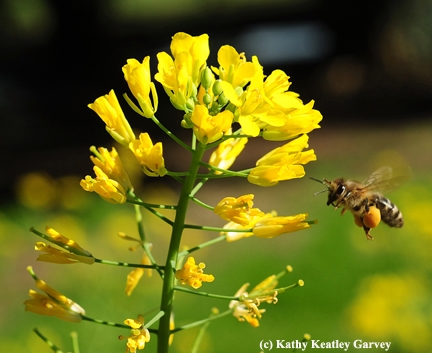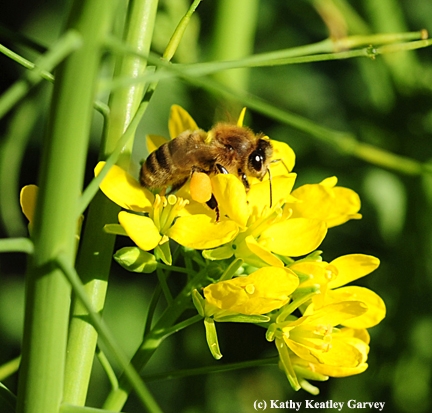"Spring is the busiest time of year for honey bees, and their keepers, whether the operation is in the desert uplands of southern Arizona, the citrus groves of Florida, or the apple orchards of Washington state," writes entomologist/bee expert Stephen "Steve" Buchmann in his book, Honey Bees: Letters from the Hive.
So true.
Lately we've been watching honey bees collecting pollen from mustard, Brassica. The amount of pollen they collect is truly amazing. Each honey bee colony collects an average of 20 to 40 pounds a year, Buchmann writes.
Buchmann, the author of The Forgotten Pollinators, The Bee Tree, and other books, will soon release his next book, The Reason for Flowers: Their History, Culture, Biology, and How They Change Our Lives, in July. Buchmann, an adjunct professor in the University of Arizona's Department of Entomology and Ecology and Evolutionary Biology, Tucson, and scientist-at-large for the Pollinator Partnership, San Francisco, received his doctorate in entomology from the University of California, Davis. He studied with major professor/native pollinator specialist Robbin Thorp, now a UC Davis distinguished emeritus professor of entomology. Buchmann's dissertation was on buzz pollination.
There's an old saying "to cut the mustard," meaning that someone is good enough or effective enough for a task.
The meaning probably originated from the military term "pass muster," but with honey bees, they're not only good at passing the muster and foraging in the mustard, they excel.
Attached Images:

